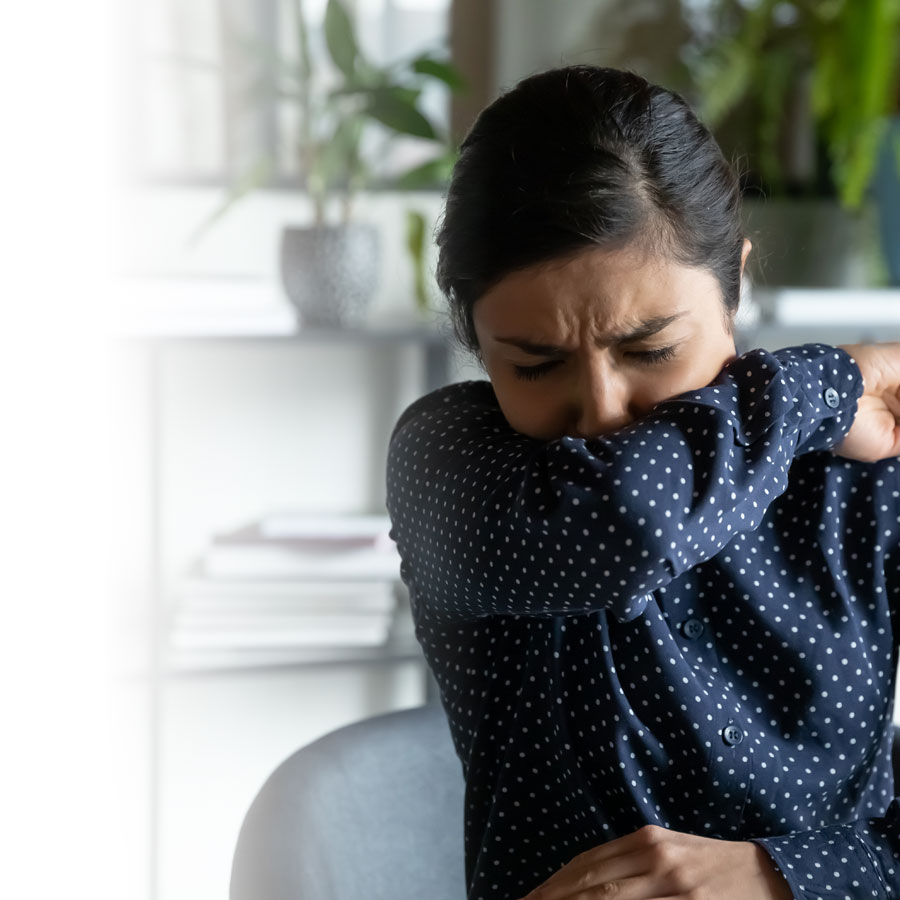It can be difficult to tell the difference between the common cold and a more serious infection such as the flu or COVID-19. How can they be distinguished?
Viruses: "tiny but mighty adversaries"!
Viruses―although as old as time―sometimes still manage to surprise or threaten us, and greatly disrupt our daily lives! The past few years have made us realize just how vulnerable we are to these microscopic but very real microbes, which can be unpredictable and sometimes devastating.
When you're sick, it can sometimes be difficult to determine the cause of your discomfort, especially when it comes to viral infections. Here is some insight into this issue.
The flu… or COVID-19?
The flu is probably the easiest viral infection to confuse with COVID-19, as these two illnesses have several symptoms in common. Cough, fever and fatigue are examples of typical symptoms of both types of infection. Other possible symptoms include muscle soreness and aches and pains.
Pneumonia is a good example of a common complication of the flu (influenza) and COVID-19. It is a more serious infection that may require medical attention and sometimes hospitalization. In the worst cases, a stay in the intensive care unit is necessary.
Vaccination campaigns against the flu and COVID-19 are crucial to prevent complications from these viruses. While anyone can get these complications, some individuals are more vulnerable. This is particularly true of the elderly and those with weakened immune systems, for whom vaccination is all the more important.
A cold… or COVID-19?
In general, the common cold can be said to be a milder infection compared to the flu or COVID-19. However, its most common symptoms, such as nasal congestion, runny nose, sneezing and sore throat, can also resemble those of COVID-19.
A cold can sometimes cause very unpleasant symptoms and even lead to complications such as sinusitis or ear infections. For people living with asthma, a cold can lead to worsening symptoms.
There is currently no effective vaccine to prevent the common cold, unlike the flu and COVID-19. Ask your pharmacist about vaccination services.
Gastroenteritis… or COVID-19?
One might think that gastroenteritis is unrelated to COVID-19, since it primarily affects the gastrointestinal system and not the respiratory system. Yet, these two viral infections can cause similar symptoms.
Although less common, some people with COVID-19 may experience nausea, vomiting, abdominal cramps or diarrhea.
Stay alert for signs and symptoms of dehydration and take steps to prevent it, as it is the most common complication of gastroenteritis. If left untreated, dehydration can be dangerous, especially for some of the more vulnerable, such as babies, young children, the elderly or those living with certain chronic diseases.
The importance of rapid tests
So, how do you distinguish COVID-19 from the flu, the common cold or even gastroenteritis? Unfortunately, you cannot diagnose it yourself just by looking at the signs and symptoms, because there are too many similarities between the manifestations of these different types of viral infections.
Fortunately, there are rapid tests that can be done at home to screen for COVID-19. Rapid tests are available free of charge at certain vaccination centers and are also sold in pharmacies, so you can be tested at home.
If you test positive on a rapid test, speak to your pharmacist to help you manage your symptoms. Your pharmacist will also be able to assess whether you are eligible for the drug PaxlovidTM, which helps reduce the intensity of symptoms and the risk of complications from COVID-19.
Prevention of viral infections
Regardless of the type of infection, prevention is a protective measure for everyone, but especially for more vulnerable people. It’s well worth the effort!
Here are some examples of measures that can protect you and help protect others.
- Stay home as much as possible if you know you are infected or have signs or symptoms.
- Wear a mask or face covering in public places or around people if you are ill.
- Wash your hands often.
- Follow respiratory etiquette (sneeze and cough into a face covering or the crook of your elbow).
Don’t hesitate to speak to your pharmacist for additional information about viral infections and the ways to prevent them.



